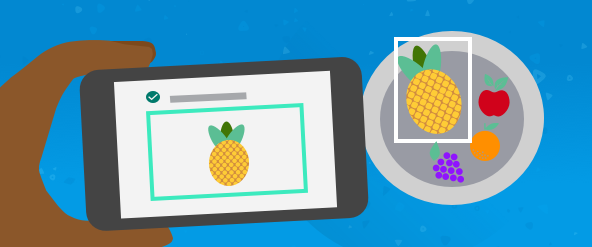AutoML Vision Edge
Usa AutoML Vision Edge para crear modelos personalizados de clasificación de imágenes con tus propios datos de entrenamiento.

Si quieres reconocer el contenido de una imagen, una opción es usar la API de etiquetado de imágenes en el dispositivo del ML Kit o la API de detección de objetos en el dispositivo. Los modelos que utilizan estas API están diseñados para un uso general y se entrenan con el fin de reconocer los conceptos más comunes en las fotos.
Si necesitas un modelo de etiquetado de imágenes o un modelo de detección de objetos más especializado y que abarque un dominio de conceptos más limitado y detallado (por ejemplo, un modelo para distinguir entre especies de flores o tipos de comida) puedes usar Firebase ML y AutoML Vision Edge para entrenar un modelo con tus propias imágenes y categorías. El modelo personalizado se entrena en Google Cloud y, una vez que está listo, se usa por completo en el dispositivo.
Comenzar con el etiquetado de imágenes Comenzar a detectar objetos
Funciones clave
| Entrena modelos basados en tus datos |
Entrena automáticamente los modelos de etiquetado de imágenes y de detección de objetos personalizados para reconocer las etiquetas que te interesan utilizando tus datos de entrenamiento. |
| Alojamiento de modelos integrado |
Aloja tus modelos con Firebase y cárgalos en el entorno de ejecución. Si alojas el modelo en Firebase, puedes asegurarte de que los usuarios tengan el último modelo sin lanzar una nueva versión de la app. Además, puedes empaquetar el modelo con tu app, de modo que esté disponible de inmediato en la instalación. |
Ruta de implementación
| Recopilar datos de entrenamiento | Prepara un conjunto de datos de ejemplos de cada etiqueta que quieras que tu modelo reconozca. | |
| Entrena un modelo nuevo | En Google Cloud console, importa tus datos de entrenamiento y utilízalos para entrenar un nuevo modelo. | |
| Usa el modelo en tu app | Empaqueta el modelo con tu app o descárgalo desde Firebase cuando sea necesario. Luego, usa el modelo para etiquetar imágenes en el dispositivo. |
Precios y límites
Para entrenar modelos personalizados con AutoML Vision Edge, debes tener el plan de pago por uso (Blaze).
| Conjuntos de datos | Facturado de acuerdo con las tarifas de Cloud Storage |
|---|---|
| Imágenes por conjunto de datos | 1,000,000 |
| Horas de entrenamiento | No hay límite por modelo |
Próximos pasos
- Aprende a entrenar un modelo de etiquetado de imágenes.
- Descubre cómo entrenar un modelo de detección de objetos.
